Articles and Features
Sean Kelly | Collect Wisely
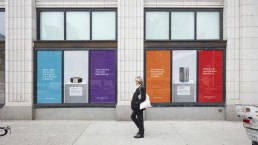
"And, you know, the commonality here is a focus on passion, drive, collecting, husbandry of one's collection, and connoisseurship. Those are very different standards to trying to flip a major work, you know?"
A little over a year ago New York gallerist Sean Kelly, who opened his first Manhattan gallery more than 25 years ago, launched an initiative designed to combat what he and some close associates within his collector community had identified as a disheartening and worrying trend within the art world. A crisis of sorts was perceived to have permeated the industry, dulling the appetites of true enthusiasts and causing art professionals and collectors alike to look into the motives for buying and selling art. Kelly had noticed an increasingly steep decline in standards of connoisseurship amongst the art buying public, with a significant drop-off in the concomitant qualities of passion and dedication to the art itself. He was instead left bemused and sometimes dispirited by the increased tendency to value art in asset terms; in short, what a work of art or collection could be sold for, as opposed to the inherent qualities of the artwork and its didactic and emotive potential. Many art buyers, it seemed, were less and less invested in the legacy business, gravitating instead towards an altogether different kind of investment, predicated solely on business itself.
Speculation through art acquisition and racing to form a queue in order to purchase work by the latest hot tip is not a particularly new phenomenon in the art world, but in the last decade, or perhaps even a little before that, a new cadre of ‘collector’ emerged; that of the affluent (often young) professional who also dabbles in buying and flipping art as a lucrative sideline. More than a hobby and less than a profession, this approach typically uses a network with high-level access and considerable resources to identify and opportunistically shop for the latest art ‘brand’, the objective being to target the highest potential flip or the artwork in which the most immediate monetary growth potential resides. Quite apart from the failure of this approach to fully engage with an individual piece on its own intrinsic merits, it has also proved problematic for many sectors of the industry, not least the numerous artists’ careers on which it has had a detrimental impact. It has even forced galleries to second guess their clients’ motives and be selective to whom they sell work. The rise of the online auction market, and the explosive growth of social media have opened further doors for promotion and commerce that hitherto didn’t even exist, expanding the possibilities for flipping and exacerbating the likelihood of people utilising the rapid turnover of art as a supplemental, or even comprehensive, wealth-building strategy.
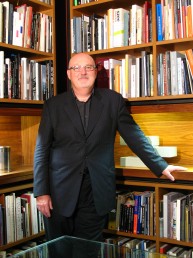
Having identified, in his view, the root cause of the industry’s existential moment, Kelly determined that something should be done. He has previously explained that the idea for a scheme was fostered during an informal Sunday afternoon chat with a collector and friend, Daniel Sallick, an experienced and committed art collector and currently the chair of trustees of the Hirshhorn Museum in Washington DC. Early the next week Sallick followed up, energised by the conversation they had shared and motivated to proceed with a plan for a collaboration that could challenge this encroaching ennui. This plan became an initiative called Collect Wisely. Billed on the gallery website as a “an overarching advertising, podcast, social media, and event driven campaign aimed at refocusing the conversation around collecting to return it to the heart of the matter; bringing the conversation back to discussing art, the artists, and a passion for collecting and connoisseurship”, the campaign has gained a recognition and momentum that only conversation game-changers can achieve.
At the heart of the project are a series of podcasts, conducted on a one-to-one basis between Kelly himself and a roll call of mostly prominent collectors. He talks openly and candidly with each about what they understand to be the essential values of art, their reasons for collecting and other things that fuel their cultural passions. The effect is inclusive, collegial and entertainingly anecdotal, as if the listener is present at an intimate and relaxed conversation involving participants with an engaging and easy authority. The response from the industry has been eye-opening and instructive, with extensive coverage in both art world and general news media. Whilst the podcasts form one element, the wider campaign includes billboards and other forms of advertising, including on the facade of the gallery itself. In these formats the message is more provocative and directly confrontational; in Kelly’s words “a good poke in the ribs”, with combative slogans such as “Are you chasing the high or history?”; “Will history remember you as an investor or a collector?” and the most obviously reductive, “Value art, not its value.”
"I hope it comes across as being a very positive message about us feeling pretty good about what we do and wanting to share that with other people. And also finding other people who share our values and thoughts and ideas, and learning from them."
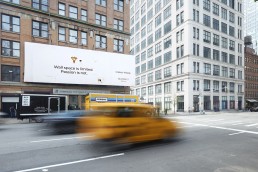
As a leading and influential figure at the highest echelon of the gallery community, Kelly has experienced more than most what it takes to formulate a successful gallery program, especially since the core of his mission has been to advocate for his artists and their critical and institutional recognition above all else. It is the rigorous adherence to this ideal that has been the main driver for his commercial success (notwithstanding the quality of choices his keen eye has enabled him to make). The very consistency of this integrity has created a holy trinity between the gallery, the artists and clients, where a fundamental mutual trust provides the varying kinds of sustenance each requires.
The cynic could very well ask why a gallerist at this rarefied level, with untrammelled access to both the most famous (and expensive) artists and the richest collectors should feel the need to challenge the status quo. Why bite the hand that feeds, or be the one to critique the very industry that has facilitated and enabled him to achieve such laudable results? One could also argue that Collect Wisely bears just right kind of lustrous public relations patina to reflect back propitiously upon the gallery itself. Kelly agrees that the potential for this kind of inference exists, even going so far as to volunteer the elephant in the room before it is put to him. He argues that gallery promotion is in no way at the forefront of the mission, except of course that the initiative is entirely reflective of the gallery mission itself and, self-evidently, a product of it. What Kelly can agree upon is that he is in the fortunate position of being able to leverage the credibility his standing has bestowed in order to broach the issues in the first place, “What we’re trying to do is to use that status, such as it is, to engender a conversation with real collectors about the historic kind of principles of collecting.”
Nonetheless, the claims that this not a clever advertisement concealed within an elaborate subterfuge of altruism hold up under scrutiny. Firstly, the podcasts themselves leave absolutely no doubt that the objective is to reset the narrative surrounding contemporary collecting; a clarion call tuned to resonate with collectors minded to think like the participants. Not all of the collectors who have taken part are collectors of the gallery, and generally, whenever the gallery name was mentioned in the dialogues it was edited out of the final recording. Similarly, if any of the segments mentioned a gallery artist, that too was most often edited to remove actual or potential bias. Whilst this was adopted as a general editorial policy, it was also applied with the elasticity of common sense, since there were one or two occasions when the name of a gallery artist came up as a key component of a conversation. The conversations themselves meander pleasantly and informatively, traversing each of the participants’ collecting journeys with them. Financial investment is only ever discussed as a means of framing or defining the participant’s underlying passion or commitment. Some of the collectors are asked, or volunteer stories, about starting out, of paying a certain sum for a work when they barely had the economic means to justify such an outlay. The context is thus one of dedication, and topics such as asset appreciation, or re-sale, or current market value are never mentioned. Instead, we are regaled with litanies of learning and education, of reading and researching, of innumerable exhibition visits, and of getting filled up with the kind of experiences that engender true passion.
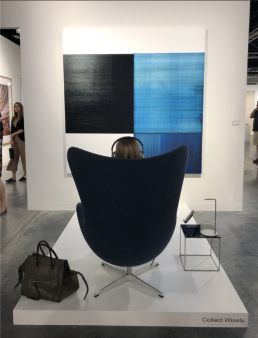
The initiative shows no signs of running out of steam. Indeed, it has already encompassed a number of key additional elements that have served to strongly substantiate the message. During Art Basel Miami at the end of last year, Collect Wisely morphed into a fully fledged multi-media experience within the gallery booth. Appearing as an installation, the prominence of which was unmistakeable given how much of the prime real estate it occupied, it consisted of an Arne Jacobsen ‘Egg’ chair atop a low plinth facing a single artwork. Works by Callum Innes, Idris Khan, Hugo McCloud, Shahzia Sikander, and Janaina Tschäpe took turns as beholder subject, and each was then accompanied by the artist’s voice narrating, mediating or somehow supplementing the viewing experience through noise cancelling headphones. During the cacophonous environment of a typical Basel Miami day, the experience was brilliantly emblematic of the kind of time-slowing, contemplative, and reflective re-set the campaign is championing. The next phase will bring a book based on the series, and a physical exhibition with a single significant object or work loaned from each interviewee, with a text talking about what it means to them. As Kelly describes it “It’s taking objects that belonged to those collectors who’ve been on the podcasts and it’s using them like art objects, photographing them on a plinth, producing a label for them. And the labels ask questions. So for instance, we’ve got Tom Hill’s watch, we’ve got one of the collector’s passports, we’ve got Tiffany Zabludowicz’s shoes, we’ve got Aaron Levine’s glasses. So each of the narratives that are developed in the labels are specific to that object. And they’re very much more aspirational. They’re very positive and it’s very much about how are you going to define yourself as a collector.”
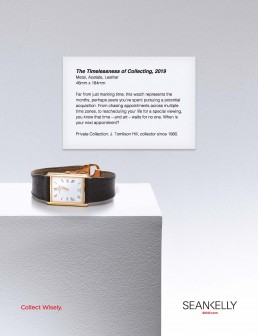
Other galleries have followed suit. There have been other podcasts, but few are still extant. Some produce glossy magazines, pseudo-scholarly productions that seek to curate existing gallery content with an editorial slant. With a high production value these kinds of initiatives are undeniably seductive. It is nonetheless impossible to escape from their essential raison d’etre, that of self-promotion by subtle means. The difference is that Collect Wisely continues to garner attention because it does not do these things. It seeks only to tell the story of commonalities between diverse people from all around the World, people who love art for its own sake, and to perpetuate this as the single driving force behind collecting. Certainly notions of legacy, of communal sharing and the like follow, but these are ancillary considerations and can only happen if the core belief is adhered and committed to. Through listening, gallerists and collectors alike are allowed to feel that their vocational attraction to, and belief in, art’s profundity can be restored. In Kelly’s words “what we hear from all these collectors is they suddenly found that they were part of a community. And they like it.”
Relevant sources to learn more:
Gallery
Sean Kelly Gallery
Opening year
1991
Opening Times
Tue – Fri
11am – 6pm
Sat
10am – 6pm
Address
475 Tenth Avenue
New York NY 10018